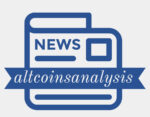USDC reached a market cap of $60.2 billion, surpassing its previous all-time high set back in 2022. Over three months, USDC grew by $16.3 billion, while USDT increased by only $4.4 billion in comparison. The market capitalization of USDC reached $60.2 billion on March 26, surpassing its previous peak of $55 billion set in 2022. This increase places the stablecoin among the strongest players in the sector. The shift follows a broader trend in digital assets, as more users and institutions seek faster, regulated, and fully backed options for storing and transferring value. Source: Artemis Analytics In comparison, Tether’s USDT remains at the top, holding a market cap of $144 billion. Despite this lead, the last three months showed a different rhythm. USDC added $16.3 billion, while USDT increased by just $4.4 billion, according to Artemis Analytics. In that same period, USDC’s market cap doubled, reflecting a 100% increase since March 2024, when it stood at $30 billion. Source: Artemis Analytics Circle, the issuer of USDC, is not limiting its growth to volume. The company has expanded operations to Japan, entering a region with increasing interest in stable digital currencies. The was carried out in partnership with SBI VC Trade, marking a direct entry into Asia’s regulated financial markets. At the same time, Circle upgraded USDC’s cross-chain transfer protocol, cutting transaction times from minutes to seconds on networks such as Ethereum, Avalanche, and Base. These improvements offer clear advantages for decentralized finance, where timing can influence outcomes and reduce operational risk. Despite USDC’s upward momentum, USDT’s dominance is supported by broad liquidity and long-standing adoption, particularly in regions where access to banking infrastructure remains limited. While USDC continues to scale and secure institutional trust through regulated practices and transparent reserves, the distance between both tokens in market presence remains considerable. Source: Artemis Analytics Still, USDC’s advance adds pressure to existing standards in the stablecoin sector. The increase in its use and the expansion of its utility show a shift in how digital dollars are being managed globally. Parallel to USDC’s growth, the total stablecoin market cap surpassed $230 billion, indicating broader movement in the stable-value asset category. The changes suggest a reshaping of liquidity flows in digital markets, with USDC playing a more visible role in that process. The post USDC reaches $60.2B and enters Japanese market amid faster transfers appeared first on ETHNews. in a formal or creative style, maintaining a 500 word count. You must only respond with the modified content. Change the tone of my title “USDC reached a market cap of $60.2 billion, surpassing its previous all-time high set back in 2022. Over three months, USDC grew by $16.3 billion, while USDT increased by only $4.4 billion in comparison. The market capitalization of USDC reached $60.2 billion on March 26, surpassing its previous peak of $55 billion set in 2022. This increase places the stablecoin among the strongest players in the sector. The shift follows a broader trend in digital assets, as more users and institutions seek faster, regulated, and fully backed options for storing and transferring value. Source: Artemis Analytics In comparison, Tether’s USDT remains at the top, holding a market cap of $144 billion. Despite this lead, the last three months showed a different rhythm. USDC added $16.3 billion, while USDT increased by just $4.4 billion, according to Artemis Analytics. In that same period, USDC’s market cap doubled, reflecting a 100% increase since March 2024, when it stood at $30 billion. Source: Artemis Analytics Circle, the issuer of USDC, is not limiting its growth to volume. The company has expanded operations to Japan, entering a region with increasing interest in stable digital currencies. The was carried out in partnership with SBI VC Trade, marking a direct entry into Asia’s regulated financial markets. At the same time, Circle upgraded USDC’s cross-chain transfer protocol, cutting transaction times from minutes to seconds on networks such as Ethereum, Avalanche, and Base. These improvements offer clear advantages for decentralized finance, where timing can influence outcomes and reduce operational risk. Despite USDC’s upward momentum, USDT’s dominance is supported by broad liquidity and long-standing adoption, particularly in regions where access to banking infrastructure remains limited. While USDC continues to scale and secure institutional trust through regulated practices and transparent reserves, the distance between both tokens in market presence remains considerable. Source: Artemis Analytics Still, USDC’s advance adds pressure to existing standards in the stablecoin sector. The increase in its use and the expansion of its utility show a shift in how digital dollars are being managed globally. Parallel to USDC’s growth, the total stablecoin market cap surpassed $230 billion, indicating broader movement in the stable-value asset category. The changes suggest a reshaping of liquidity flows in digital markets, with USDC playing a more visible role in that process. The post USDC reaches $60.2B and enters Japanese market amid faster transfers appeared first on ETHNews.” for a more friendly approach. Keep the content length about the same. You must only respond with the modified content.




